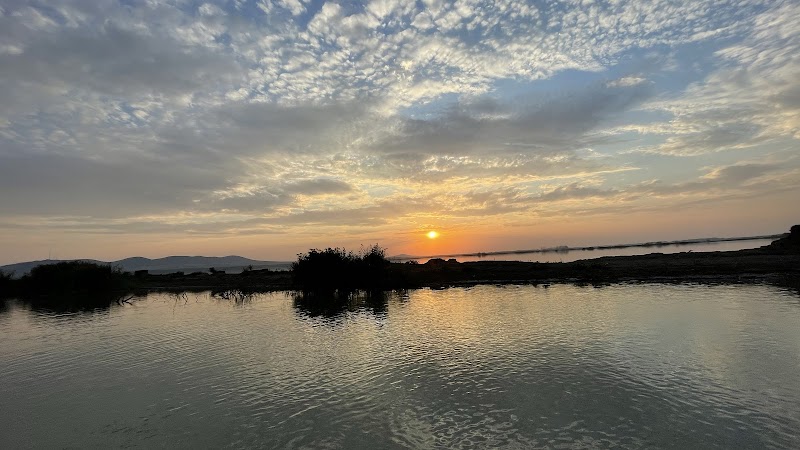
Spring Awakening: Birdwatching Season Opens in Tulcea, Romania
Spring breathes life into Tulcea’s Danube Delta, inviting birdwatchers to witness one of Europe’s richest avian migrations. This guide offers practical tips and vivid insights for planning a rewarding outdoor adventure deep into wetland trails and forest edges.
Wear Waterproof Footwear
With marshy trails and occasional flooded stretches, waterproof boots or sturdy shoes will keep you comfortable and dry throughout the hike.
Bring Binoculars and Field Guide
A quality pair of binoculars and a local bird species guide enhance your spotting and identification experience in the delta’s diverse habitats.
Start Early in the Day
Bird activity peaks in the early morning; set out at dawn to maximize sightings and enjoy cooler temperatures before midday warmth.
Check Weather and Waterways
Spring weather can shift suddenly, and some routes are reachable only by boat or ferry. Confirm transport options and weather forecasts before heading out.
Spring Awakening: Birdwatching Season Opens in Tulcea, Romania
Tulcea County, a gateway to the Danube Delta, transforms each spring as migratory birds return from their winter havens. The air fills with the sharp calls of herons, the drumming of woodpeckers, and the gentle rustling of reed beds swaying in the breeze. This season marks the prime time for birdwatchers to witness one of Europe’s richest avian gatherings.
Start your adventure at the vicinity of the Danube Delta Biosphere Reserve, a sprawling wetland where waterways dare you to explore by foot or boat. The terrain here is flat to gently undulating, with routes varying from short 3-5 km nature trails to longer 15 km hikes through forested patches and open marshlands. Expect soft soil paths and sections where reeds have reclaimed parts of the trail, requiring sturdy, waterproof shoes.
Elevation gain is minimal—usually below 100 meters per trail—but the challenge lies in navigating moist ground and early spring weather fluctuations. Morning hikes reward you with crisp air and the chance to catch birds at their active best. Afternoon light brings sweeping views over floodplains that pulse with wildlife.
To make the most of your spring birdwatching, bring binoculars with a decent zoom range—7x or 10x lenses are standard. A field guide specific to Danube Delta species, such as the Mediterranean gull or the glossy ibis, sharpens identification.
Hydration is key; pack enough water as facilities along trails are sparse, and Easter weekend crowds can mean busy local services. Dress in layers to adjust to shifting temperatures; April mornings often bite cold before the sun pushes through.
While the delta’s wildlife is fiercely itself, respect its rhythms. Stick to marked paths, avoid sudden noises, and remember that the marsh’s currents dictate the pace. Some trails require a ferry or boat where waterway movements demand flexibility in planning.
Consider staying in the city of Tulcea, a compact hub with easy access to the delta routes and essential amenities. From here you can organize guided tours or rent small boats for a closer, water-level view of the bird colonies.
Whether you’re a casual observer or seasoned birder, spring in Tulcea offers a practical, immersive experience. The landscape isn’t just a backdrop but an active participant—waiting, watching, and revealing its avian secrets one flight at a time.
Nearby Trips
All Adventures
Boat Charters
Water Activities
Adventures near Tulcea, Tulcea County, Romania
Discover the unique and memorable adventures that make Tulcea, Tulcea County, Romania special.
Frequently Asked Questions
When does the birdwatching season officially begin in Tulcea?
Birdwatching season typically begins in early April with the arrival of spring migrants. Peak activity runs through May when the Danube Delta becomes a hotspot for nesting and feeding birds.
Are guided tours necessary to explore the delta’s birdwatching trails?
While many trails are accessible independently, employing a local guide enhances the experience by ensuring you reach less-traveled spots and learn about species-specific behaviors.
What types of birds can I expect to see in spring?
Spring visitors include species such as the Dalmatian pelican, pygmy cormorant, great reed warbler, and the rare moustached warbler, alongside many waterfowl and waders returning after winter.
Is it safe to hike through marshy and flooded areas?
Yes, as long as you stick to marked trails and remain cautious of soft ground and water levels. Some areas require boat crossings, so check local conditions before heading out.
What accommodations are recommended in the area?
Tulcea city offers a range of accommodations, from budget hostels to comfortable guesthouses, providing easy access to the delta and essential services for travelers.
Are there any cultural sites nearby to combine with birdwatching?
Yes. Tulcea has the Danube Delta Museum showcasing local biodiversity and history, and nearby villages offer insight into traditional fishing and rural life connected to the delta environment.
Recommended Gear
Waterproof Hiking Boots
Protects feet from wet conditions typical of marsh and delta trails, providing stability on uneven terrain.
Binoculars
Essential for observing birds from a distance without disturbing them.
Lightweight Waterproof Jacket
Shield against unpredictable spring showers and winds common near the waterways.
Reusable Water Bottle
Staying hydrated is critical; water sources on trails are limited.
Local Insights
Hidden Gems
- "The Maliuc Forest Trail offers quieter observation spots with varied bird species away from main visitor routes."
- "Puiu Island viewing platform provides an elevated vantage point over reed beds often overlooked by casual birdwatchers."
Wildlife
- "Keep an eye out for the elusive marbled polecat near riverbanks and the rare white-tailed eagle soaring above the delta."
- "Early spring frogs signal the increasing activity of amphibians, adding sound and movement to the landscape."
History
"Tulcea has served as a trading hub for centuries, its location connecting the Black Sea with inland Europe. The Danube Delta itself is a cultural crossroads for ethnic groups including Romanians, Lipovans, and Turks, each shaping the natural landscape’s relationship with human activity."
